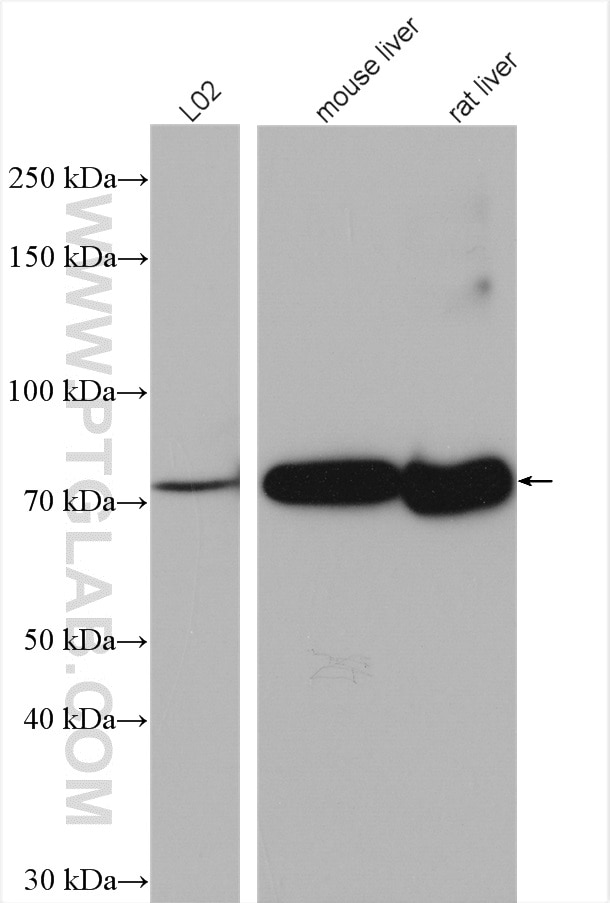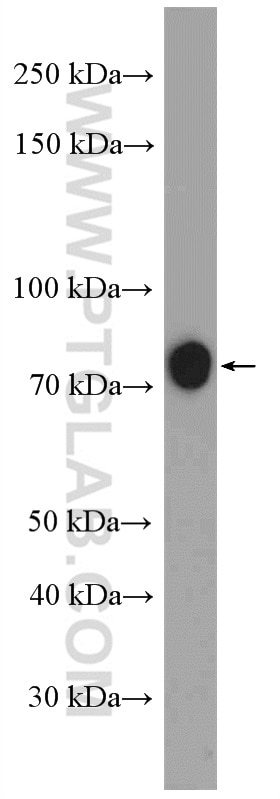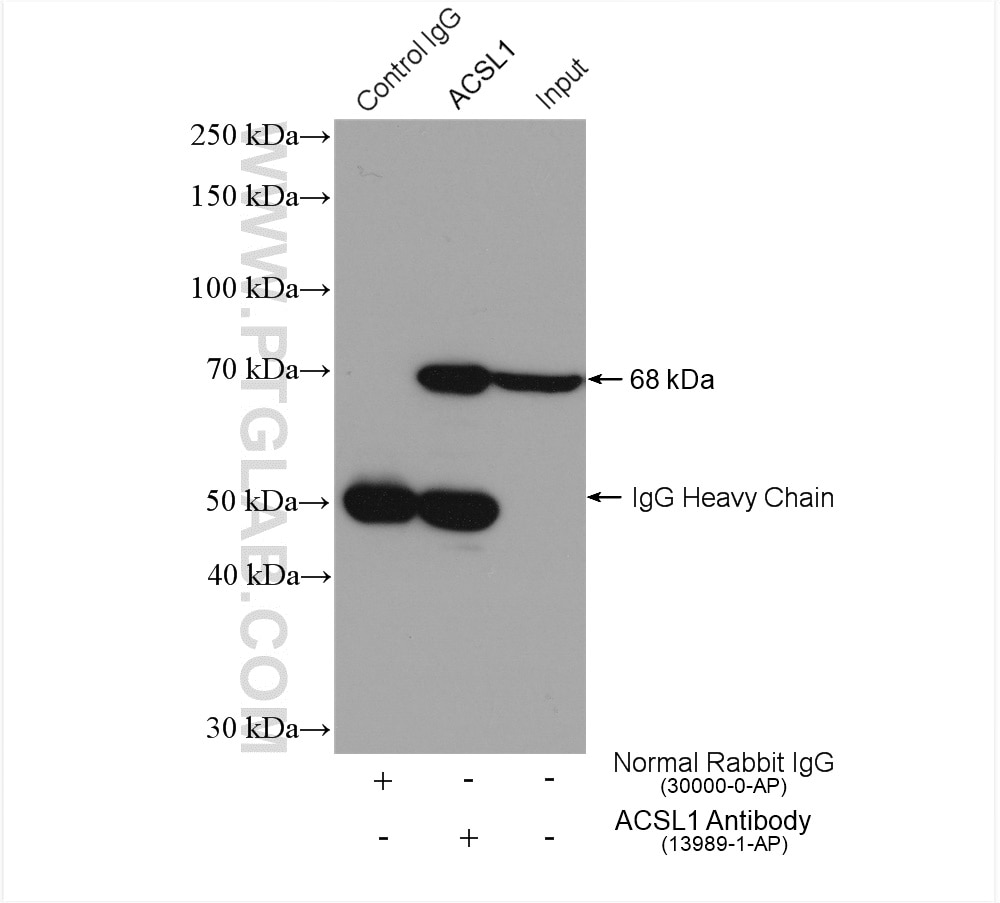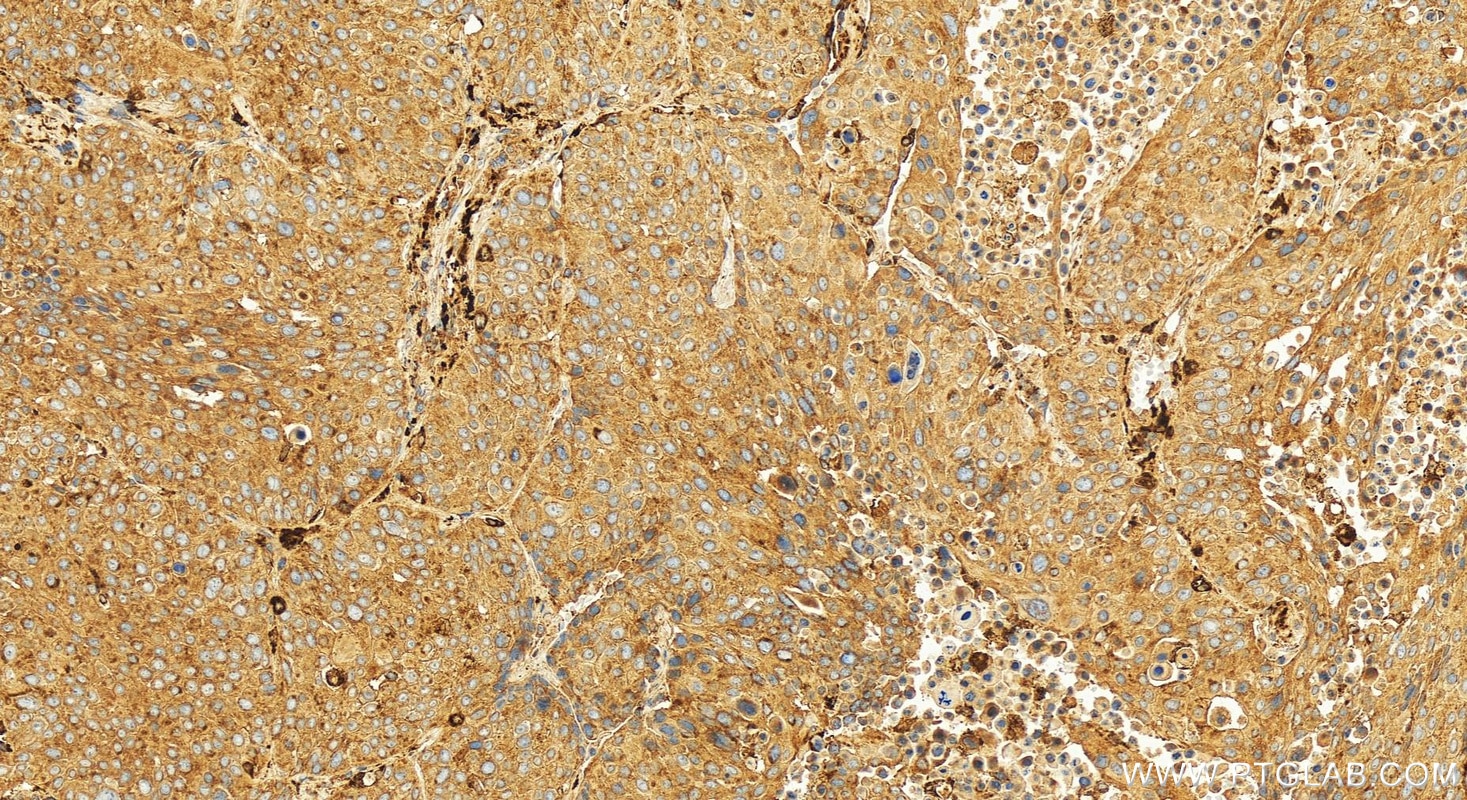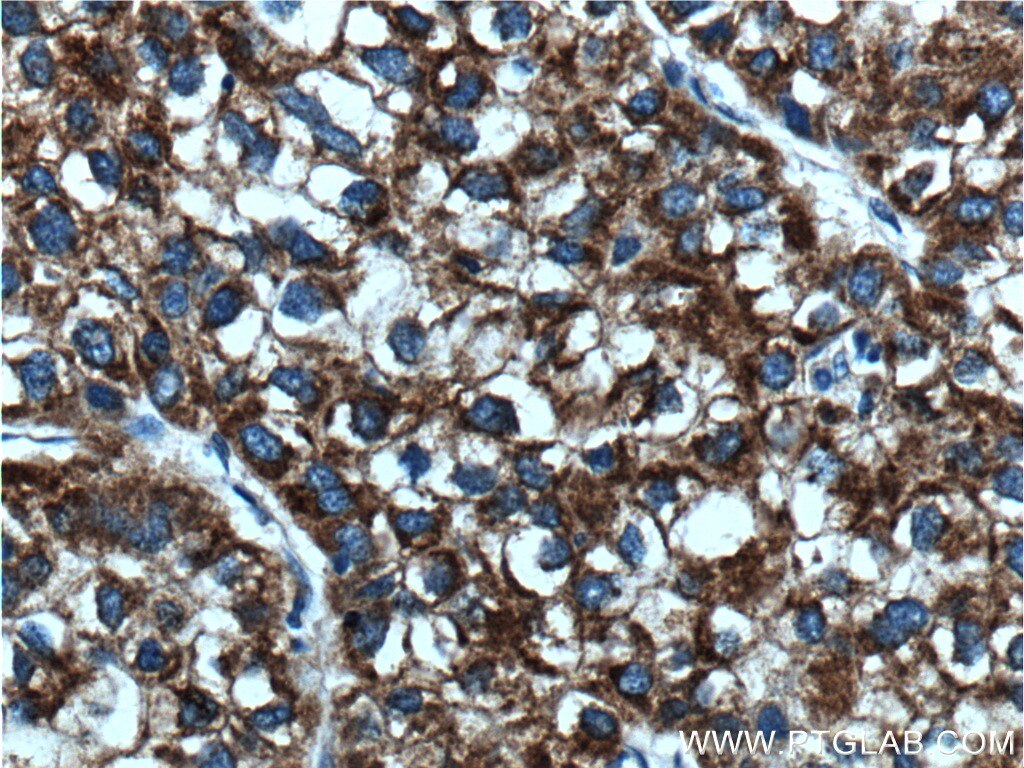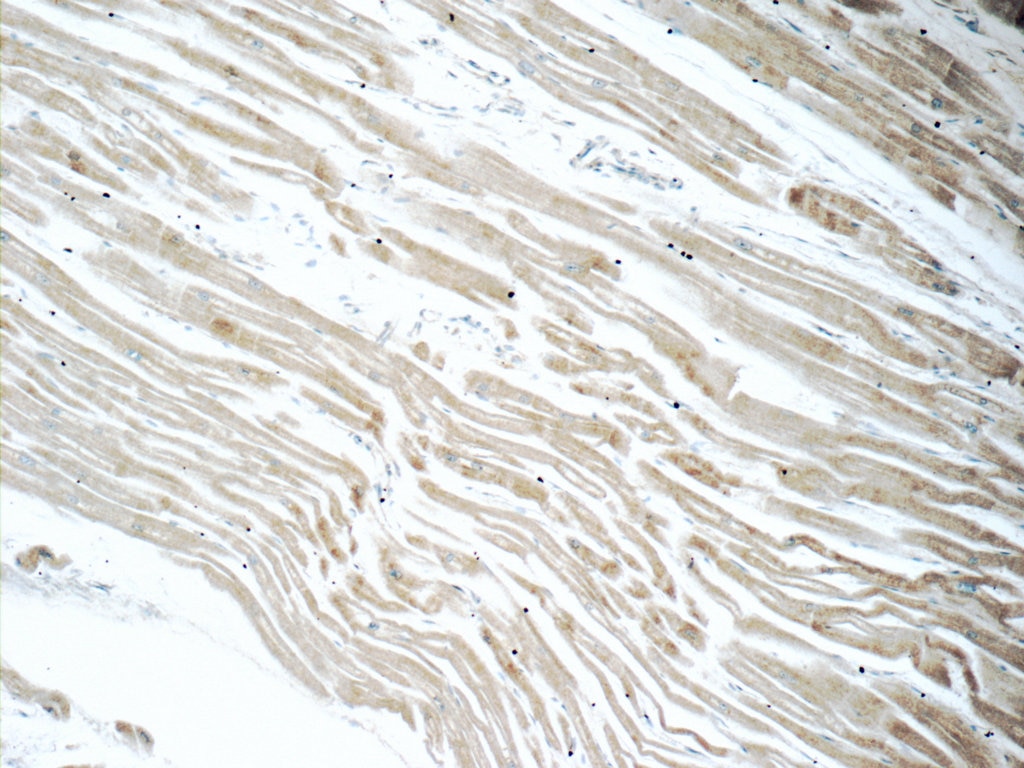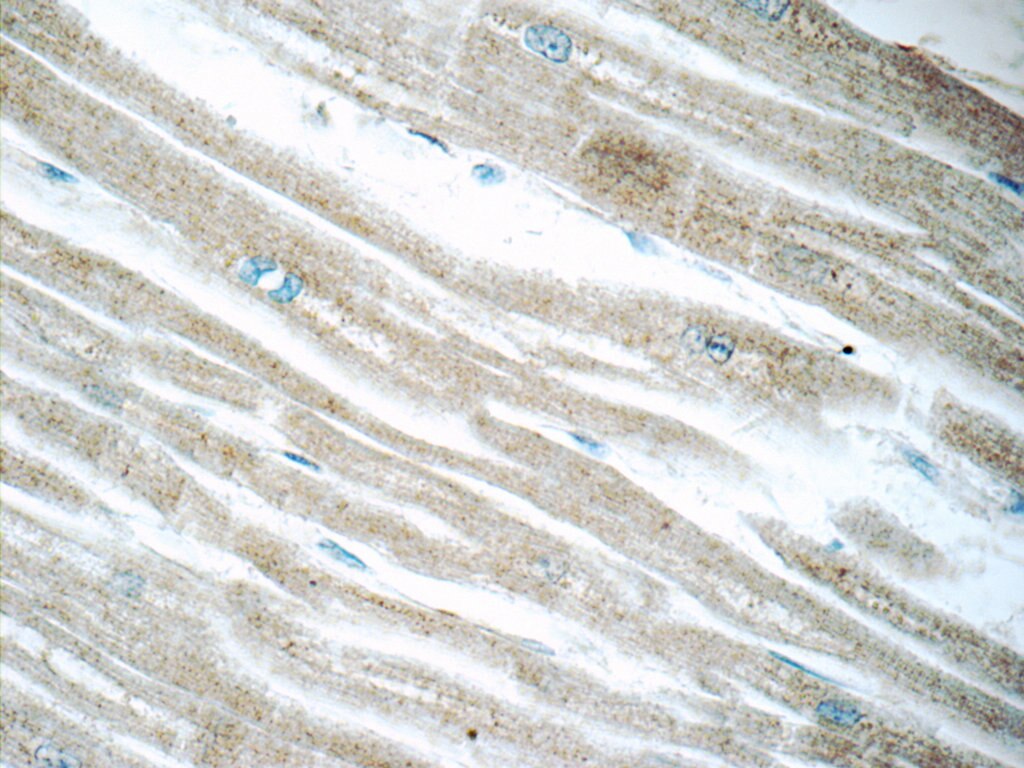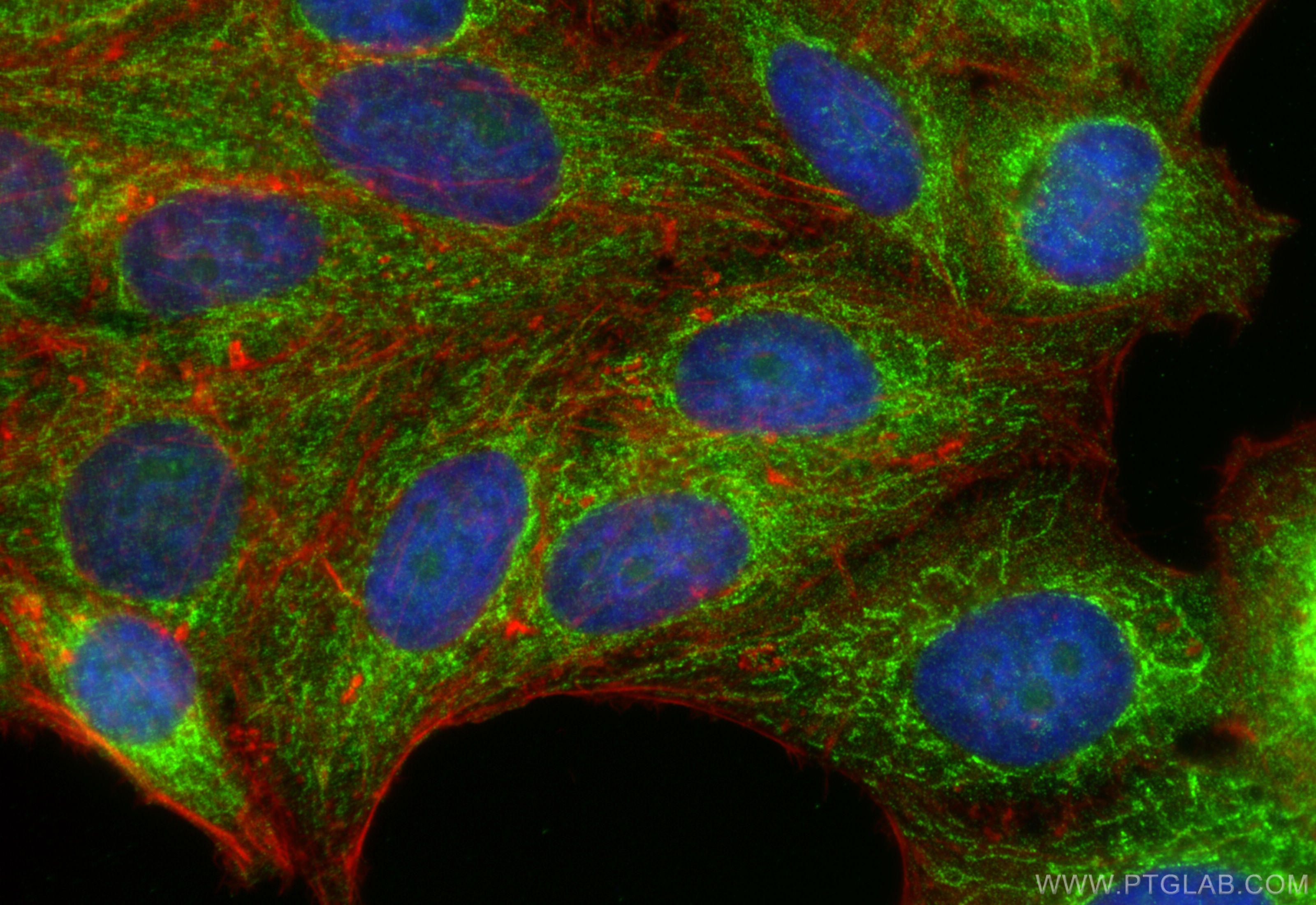- Phare
- Validé par KD/KO
Anticorps Polyclonal de lapin anti-ACSL1
ACSL1 Polyclonal Antibody for WB, IHC, IF/ICC, IP, ELISA
Hôte / Isotype
Lapin / IgG
Réactivité testée
Humain, rat, souris et plus (1)
Applications
WB, IHC, IF/ICC, IP, ELISA
Conjugaison
Non conjugué
N° de cat : 13989-1-AP
Synonymes
Galerie de données de validation
Applications testées
| Résultats positifs en WB | cellules L02, tissu de cervelet de souris, tissu hépatique de rat, tissu hépatique de souris |
| Résultats positifs en IP | tissu hépatique de souris, |
| Résultats positifs en IHC | human lung squamous cell carcinoma tissue, tissu cardiaque humain, tissu de cancer du foie humain il est suggéré de démasquer l'antigène avec un tampon de TE buffer pH 9.0; (*) À défaut, 'le démasquage de l'antigène peut être 'effectué avec un tampon citrate pH 6,0. |
| Résultats positifs en IF/ICC | cellules HepG2, |
Dilution recommandée
| Application | Dilution |
|---|---|
| Western Blot (WB) | WB : 1:1000-1:6000 |
| Immunoprécipitation (IP) | IP : 0.5-4.0 ug for 1.0-3.0 mg of total protein lysate |
| Immunohistochimie (IHC) | IHC : 1:200-1:800 |
| Immunofluorescence (IF)/ICC | IF/ICC : 1:400-1:1600 |
| It is recommended that this reagent should be titrated in each testing system to obtain optimal results. | |
| Sample-dependent, check data in validation data gallery | |
Applications publiées
| KD/KO | See 3 publications below |
| WB | See 54 publications below |
| IHC | See 9 publications below |
| IF | See 5 publications below |
| IP | See 2 publications below |
Informations sur le produit
13989-1-AP cible ACSL1 dans les applications de WB, IHC, IF/ICC, IP, ELISA et montre une réactivité avec des échantillons Humain, rat, souris
| Réactivité | Humain, rat, souris |
| Réactivité citée | rat, Humain, porc, souris |
| Hôte / Isotype | Lapin / IgG |
| Clonalité | Polyclonal |
| Type | Anticorps |
| Immunogène | ACSL1 Protéine recombinante Ag5059 |
| Nom complet | acyl-CoA synthetase long-chain family member 1 |
| Masse moléculaire calculée | 78 kDa |
| Poids moléculaire observé | 68 kDa, 78 kDa |
| Numéro d’acquisition GenBank | BC050073 |
| Symbole du gène | ACSL1 |
| Identification du gène (NCBI) | 2180 |
| Conjugaison | Non conjugué |
| Forme | Liquide |
| Méthode de purification | Purification par affinité contre l'antigène |
| Tampon de stockage | PBS with 0.02% sodium azide and 50% glycerol |
| Conditions de stockage | Stocker à -20°C. Stable pendant un an après l'expédition. L'aliquotage n'est pas nécessaire pour le stockage à -20oC Les 20ul contiennent 0,1% de BSA. |
Informations générales
ACSL1(Long-chain-fatty-acid--CoA ligase 1) is also named as FACL1, FACL2, LACS, LACS1, LACS2 and belongs to the ATP-dependent AMP-binding enzyme family. ACSL1 is a 75 kDa protein that is associated peripherally with the plasma membrane(Brian M Wiczer, etc., 2006). ACSL1 is abundantly expressed in tissues, such as liver and brown fat, that metabolize substantial amounts of triglycerides as fuel, and as such, a deficiency in ACSL1 function could have a more profound affect in those cells, resulting in hepatosteatosis and potentially increased very low density lipoprotein production by the liver or decreased thermogenic capacity in brown adipose tissue(PMID:19429676). An anti-rat ACSL1 antibody recognized a band of the predicted 68 kDa in high-speed supernatant from rat liver and in human and murine SMCs, monocyte-derived macrophages, and murine peritoneal macrophages (PMID:17259370). It has 2 isoforms produced by alternative splicing.
Protocole
| Product Specific Protocols | |
|---|---|
| WB protocol for ACSL1 antibody 13989-1-AP | Download protocol |
| IHC protocol for ACSL1 antibody 13989-1-AP | Download protocol |
| IF protocol for ACSL1 antibody 13989-1-AP | Download protocol |
| IP protocol for ACSL1 antibody 13989-1-AP | Download protocol |
| Standard Protocols | |
|---|---|
| Click here to view our Standard Protocols |
Publications
| Species | Application | Title |
|---|---|---|
Nat Cell Biol Functional multi-organelle units control inflammatory lipid metabolism of macrophages | ||
Hepatology Acetyl-CoA carboxylase α promotion of glucose-mediated fatty acid synthesis enhances survival of hepatocellular carcinoma in mice and patients. | ||
Theranostics Mesenchymal glioblastoma constitutes a major ceRNA signature in the TGF-β pathway. | ||
Cancer Res Long noncoding RNA HULC modulates abnormal lipid metabolism in hepatoma cells through an miR-9-mediated RXRA signaling pathway. | ||
Oxid Med Cell Longev Mild Hypothermia Attenuates Hepatic Ischemia-Reperfusion Injury through Regulating the JAK2/STAT3-CPT1a-Dependent Fatty Acid β-Oxidation. |
Avis
The reviews below have been submitted by verified Proteintech customers who received an incentive for providing their feedback.
FH Thomas (Verified Customer) (10-23-2019) | Very good service, very good antibody
|
